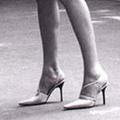The Sit-And-Go Endgame (SAGE) System is a heads-up strategy for NLHE which was developed by Lee H. Jones (author of "Winning Low Limit Hold'em" and formerly the manager of PokerStars poker rooms) and James Kittock (a mathematics professor). It's a solid and unexploitable heads-up strategy that can help you overcome weak and strong players alike. Once you're down to the last two players in a sit 'n' go, first place pays you 50% of the prize pool while second place leaves you with only 30%, so a significant proportion of the prize-money changes hands in these situations.
The system applies only to heads-up, no-limit games in which the ratio ("R") of the smaller stack size at the table divided by the current big blind is less than ten, and is at its strongest when it's less than 8.
It's deceptively simple: all you have to do is work out the power index ("PI" - a calculated numeric value) of your instant pre-flop hand and compare it against the relevant line of the table of R's on a little chart and you can see whether your PI is high enough to be a "yes"; if it's a yes, that means you go all-in if you're the small stack, and you call the all-in (or raise "all-in", i.e. enough to put your opponent all-in). It really is as simple as that, and the little chart is small and easy enough to be reduced to a "sticky note" about 5cm square which you can put on the side of your screen.
Determining your hand's PI is easy: (i) assign each of your cards a number based on the card's rank. For face cards, assign the following power numbers: J = 11, Q = 12, K = 13, and A = 15; (ii) double the power number of the higher ranked card in your hand and adding the number of the lower ranked card (i.e. 2H + L, where H is the higher number and L is the lower number); (iii) add 22 if you're holding a pair, or add 2 if your cards are suited.
Although SAGE is an unexploitable strategy, it's not always the optimal strategy. As R increases past 7 and especially past 10, it's not quite so clever.
It's even easier to use than I've made it sound. I think this area was a considerable "leak" in my game, and a highly relevant one given how often I seem to be in the prize-money. I'll report back later on how it's going for me, but at the moment I strongly welcome it. It seems to work by more or less stifling your opponent's creativity and poker abilities, reducing him to an automated system. Opponents often fold hand after hand as you continue to push your entire stack into the pot.
You can read an article about the system by Lee Jones himself
here, and more of his articles
here.







